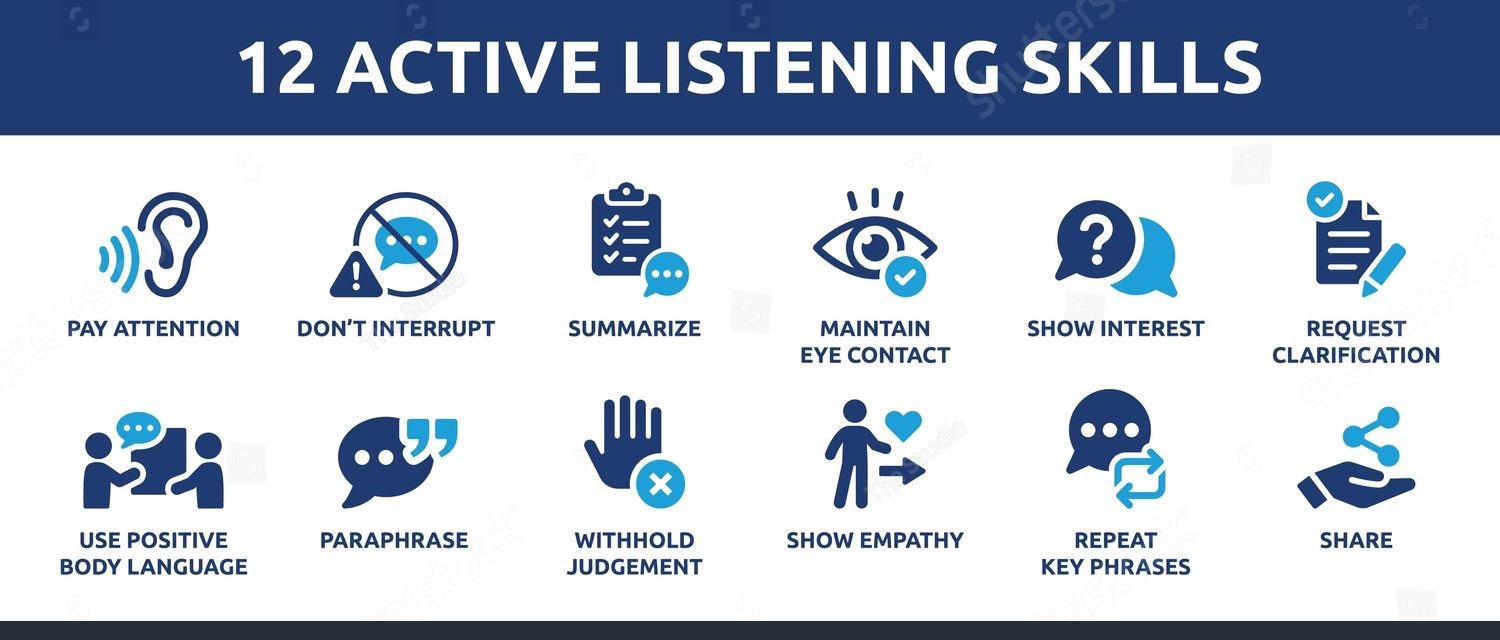The Art of Active Listening
How to Truly Hear Your Partner
In any relationship, effective communication is key to understanding and connection. One of the most crucial components of communication is listening, yet many people struggle with truly hearing what their partners are saying. Active listening is an essential skill that fosters deeper intimacy and understanding. Here’s a closer look at the art of active listening and how you can apply it to enhance your relationship.
What is Active Listening?
Active listening is more than just hearing the words being spoken; it involves fully engaging with the speaker, understanding their message, and responding thoughtfully. It requires presence, empathy, and an open mind. By practicing active listening, you show your partner that you value their thoughts and feelings, which can strengthen your bond and build trust.
Key Components of Active Listening
Be Present
- Eliminate distractions when your partner is speaking. Put away your phone, turn off the TV, and give them your full attention. Show that you are engaged by maintaining eye contact and using affirmative nods or gestures.
Listen Without Judgement
- Approach the conversation with an open mind. Avoid jumping to conclusions or making judgments about what your partner is saying. This helps create a safe space for open dialogue, allowing your partner to express themselves freely.
Reflect and Clarify
- After your partner has finished speaking, paraphrase what you heard to ensure understanding. For example, you might say, “What I hear you saying is…” This reflection demonstrates that you are actively engaged and gives your partner a chance to clarify if needed.
Ask Open-Ended Questions
- Encourage your partner to elaborate on their thoughts and feelings by asking open-ended questions. Instead of yes-or-no questions, try, “How did that make you feel?” or “Can you tell me more about that?” This invites deeper conversation and shows genuine interest.
Empathize
- Validate your partner’s feelings by expressing empathy. Use phrases like, “I can see why you would feel that way,” or “That sounds really challenging.” Acknowledging their emotions fosters a sense of connection and support.
Avoid Interrupting
- Resist the urge to interrupt or interject your own experiences while your partner is speaking. Let them finish their thoughts completely before responding. This demonstrates respect and allows for a more meaningful exchange.
Benefits of Active Listening
Enhanced Communication
- Active listening promotes open and honest communication. When both partners feel heard, it reduces misunderstandings and builds a stronger foundation for discussion.
Increased Trust
- By demonstrating that you are genuinely interested in your partner’s thoughts and feelings, you foster an atmosphere of trust. This trust encourages vulnerability and deeper emotional connection.
Conflict Resolution
- Active listening is a powerful tool in resolving conflicts. When both partners listen actively, they can better understand each other’s perspectives and work together to find solutions.
Stronger Emotional Bonds
- When partners feel heard and validated, their emotional connection deepens. This leads to greater intimacy and a stronger partnership overall.
Practicing Active Listening
Like any skill, active listening takes practice. Here are some tips to help you develop this art:
Set Intentional Time: Designate specific times to check in with each other, free from distractions. This can be during a walk, over dinner, or before bedtime.
Practice Patience: Allow your partner to express themselves fully without rushing the conversation. Give them time to articulate their thoughts.
Engage in Reflective Listening Exercises: Take turns sharing thoughts on a specific topic for a set period. The listener must reflect back what they heard before switching roles.
Seek Feedback: Ask your partner how they feel about your listening skills and what you can improve. This feedback can guide your growth in this area.
Conclusion
The art of active listening is a vital skill for nurturing a healthy, thriving relationship. By fully engaging with your partner, you foster understanding, trust, and intimacy. Remember, effective communication is a two-way street; as you practice active listening, you’ll likely inspire your partner to do the same. Embrace this art, and watch your relationship flourish through deeper connection and meaningful conversations.

